#Charles of Anjou
Text
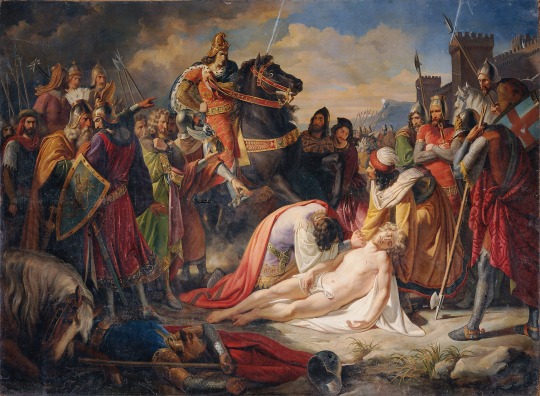
Charles I of Anjou over the body of Manfred after the Battle of Benevento on 26 February, 1266
by Carl Rahl
#battle of benevento#art#carl rahl#manfred#charles of anjou#medieval#middle ages#guelphs#ghibellines#italy#southern italy#history#knights#knight#kings#king#europe#european#hohenstaufen#benevento#kingdom of sicily#sicily#manfred of sicily#capetian#anjou#charles i#holy roman empire
55 notes
·
View notes
Text
Marguerite of Provence, Queen of France
Marguerite of Provence, Queen of France
Marguerite of Provence from a fifteenth century manuscript
Raymond-Berengar V, Count of Provence, married Beatrice of Savoy in 1219. Their eldest daughter Marguerite was born in the spring of 1221 in Forcalquier, and they would have three more daughters, all of whom would become queens. Marguerite married Louis IX of France, Eleanor married Henry III of England, Sanchia became queen of the…
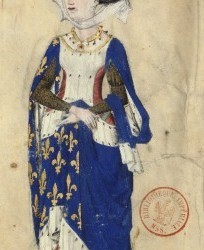
View On WordPress
#Beatrice of Provence#Beatrice of Savoy#Blanche of Castile#Charles of Anjou#Count of Provence#Count of Toulouse#Eleanor of Provence#French history#King of France#King of Sicily#Louis IX#Marguerite of Provence#medieval history#Philip III#Philip IV#Queen of England#Queen of France#Raymond VII#Raymond-Berengar V#Sanchia of Provence
2 notes
·
View notes
Text
WHY DID THE CRUSADERS STATES FALL IN 1291 - CLAN CARRUTHERS CCIS
WHY DID THE CRUSADERS STATES FALL IN 1291 – CLAN CARRUTHERS CCIS
WHY DID THE CRUSADER STATES FALL IN 1291
The war between the Mongols and the Mamluks in the second half of the thirteenth century would be the catalyst for the downfall of the Crusader States in the Near East.
In the spring of 1291 John of Villiers, master of the Knights Hospitaller, wrote to his subordinate in Southern France to report the final collapse of the kingdom of Jerusalem. The…

View On WordPress
#ANTIOCH#carrothers#Carruthers#Carruthers Clan#carruthers family history#Carruthers history#CHARLES OF ANJOU#Clan Carruthers#Clan Carruthers LLC#Crusaders#HOSPITALLERS#JOHN OF VILLIERS#MAMLUK
0 notes
Text


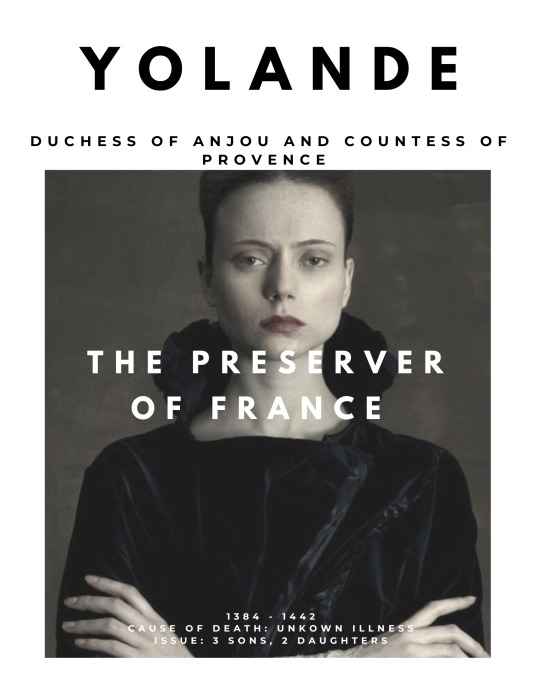

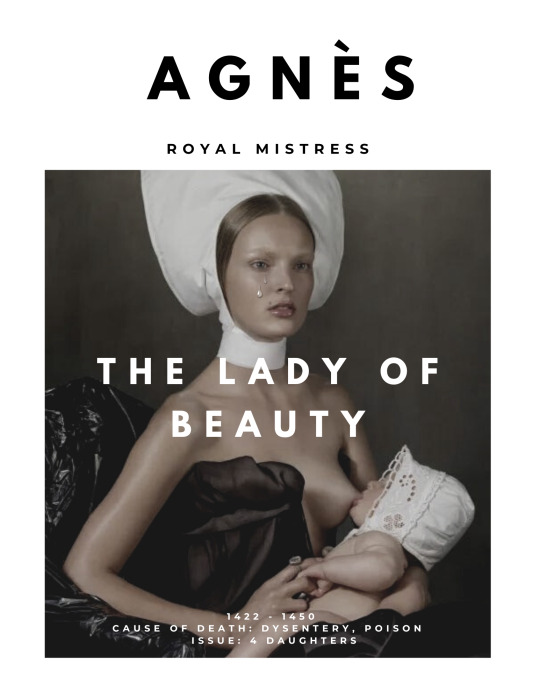

Notorious Women → Women of Charles VII’s Court
Though Charles VII had successfully expelled the English and oversaw the conclusion of the Hundred Years’ War, his legacy became largely overshadowed by the women in his life. From the brilliant political strategy of his mother in law, and martyrdom of a young peasant girl, who guided his path to victory, to the love of an extravagant beauty and bitter betrayal by her cousin, each woman’s story correlates with all of his success and ultimate downfall.
#historicalwomendaily#historicwomendaily#women of history#historical figures#charles vii#joan of arc#Agnes sorel#Marie of Anjou#yolande of Aragon#Antoinette de maignelais#hundred years war#french history#my post#my aesthetic post
92 notes
·
View notes
Text
Richard III and The July Revolution
When I finally saw the Ian McKellan Richard III film I was a bit disappointed, his performance was great and there were interesting ideas to come from the concept of adapting this play to the 1930s. But those ideas weren’t explored fully and the other performances were kinda dull.
But my biggest pet peeve was removing Margaret of Anjou, now her presence in this play is it’s most explicit historical inaccuracy, the historical Margaret was not in England anymore during any of this time period, but an adaptation that removes it from even the pretense of being about actual history doesn’t need to worry about that. As a story, her functioning as a Prophetess of Doom is a lot of why this play works and is why I’m glad the first version of it I ever watched was The Hollow Crown series where she’s played by Sophi Okonedo.
Thinking about the idea of adapting this play to other time periods got me to thinking as a part-time Francophile about the idea of using it as a framing device for a fictionalization of the July Revolution of 1830.
Charles X of France and this popular view of Richard III have in common being the youngest of three brothers who was more of a blatant tyrant then his older brothers and the end of his Dynasty overthrown in a Revolution that could also be viewed as more of a Coup.
Charles was also rumored to have had an extramarital affair with Marie Antionette. Meanwhile he never married a daughter of Marie Antionette but his son did.
Orleans would thus fill the role of Richmond and everyone’s favorite crossover plot-line between the American and French Revolution the Marquis de Lafayette can fill the role of Lord Stanley crowning the new King at the end.
But here’s where specifically my Shadowmen interests come into play. The quasi Prophetess role of Margaret of Anjou can be filled by Josephine Balsamo the Countess of Cagliostro. As a daughter of Josephine she too has a connection to a recently overthrown dynasty.
#Josephine Balsamo#Countess Cagliostro#Margaret of Anjou#Richard III#July Revolution#July Monarchy#Charles X#Francophile#Olreanist#Marie Antionette
2 notes
·
View notes
Text

King Charles Robert of Anjou fleeing from the Battle of Posada (November 9-12, 1330). József Molnár.
#József Molnár#kingdom of hungary#magyar királyság#königreich ungarn#house of anjou#maison d'anjou#king charles robert of anjou#king of hungary
6 notes
·
View notes
Text

A mythological portrait of King Louis XIV and the French royal family by French painter Jean Nocret.
#king louis xiv#philippe duke of orleans#henriette anne stuart#anne marie louise of orleans#queen henrietta maria#anne of austria#maria theresa of spain#louis grand dauphin#marie therese madame royale#philippe charles duke of anjou#marguerite louise of orleans#elisabeth marguerite of orleans#francoise madeleine of orleans#royal painting#art
14 notes
·
View notes
Photo

St Louis, Bishop of Toulouse. He had been a Franciscan and died in 1297. Charles de Valois, who founded the Charterhouse of Bourg-Fontaine near Villers-Cotterêts. From a fresco painting on the main door of the church of this Charterhouse.
#royaume de france#maison de valois#maison d'anjou#charles de france#comte de valois#louis d'anjou#évêque de toulouse#anjou sicile#regno di napoli#fleur de lis
5 notes
·
View notes
Text

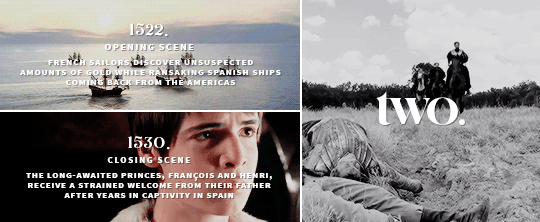

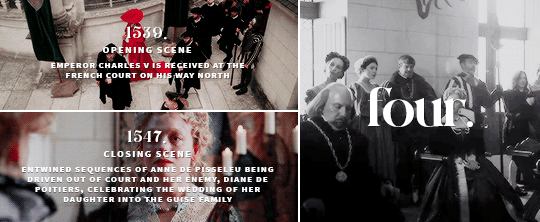
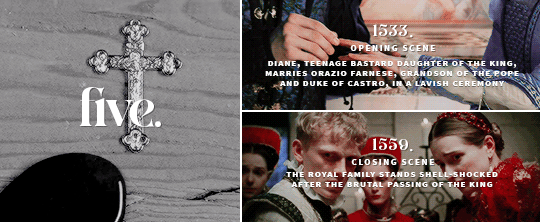


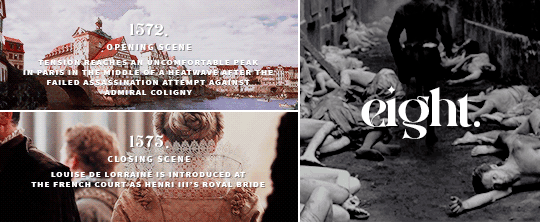
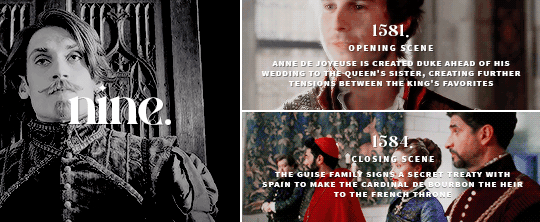


K I N G S I D E, a tale of seven kings
first season 1514-1520. Claude and François finally get married, a vacant seat for Mary Tudor, Louise of Savoy's stubborness to keep her son in check. A new King arises, the New Order, François' quest for glory in Italy. Another crown, another campaign.
second season 1522-1530. The inheritance dispute that leads Bourbon to treason. The pursuit of the italian dream, Claude dies, all is lost in Pavia. Süleyman and the unthinkable alliance, captivity in Spain. The Ottoman fleet. Royal depression. The inheritance dispute that led Bourbon to treason. The ladies' peace, Henry VIII flinching, a price for two princes, a New wife for the King.
third season 1531-1537. Louise dies, tensions between François and Marguerite. The wedding of Catherine and Henri. The rise of Pisseleu, the battle at Court between Charles and Henri and their people. War between Diane and Montmorency. Placards and the anti-heterics frenzy, another war in Italy. Wedding and death of Madeleine.
fourth season 1539-1547. Mending tensions between France and Spain. A very stubborn niece. All eyes on Henri and Catherine's sterile womb. Death of Charles. The duel in Jarnac. The King is dead, long live. Diane de Poitier's absolute triumph over Anne de Pisseleu. The Guises make their move.
fifth season 1553-1559. Diane of France's not so typical royal wedding. Catherine giving birth to the twins, Chenonceau goes to Diane, the cordial hate between the two. Rohan VS Nemours. Montmorency mess and a remarriage for Diane of France. The death of Henri, everything falls down.
sixth season 1560-1564. François II barely hanging on, Catherine's almost giving up, Elisabeth married off, the Guise family's counterpower, Montemorency's political exile, the Amboise conspiracy, preparations for the grand tour.
seventh season 1565-1572. The end of the grand tour, encounter between the royal family and Elisabeth, queen of Spain. The rise of Charles IX, a new queen, Marie Touchet and her bastard boys. Catherine's plans to get a match for Marguerite. Rising tensions between Charles and Henri after Jarnac and Montcontour. Marguerite's nuptials amidst tensions and Coligny's attempted murder.
eighth season 1572-1575. Coligny and the Protestant leaders rallying the troops. The Saint Barthelemew Massacre and the promise of Marguerite to never forgive her family. Catherine finds out Anjou's possible involvement. A new king for Poland. Marguerite's toubled married life. Death of Charles IX. Henri's escape from Poland and slow return to France.
nineth season 1581-1584. Catherine's illusions shatter. New King, no heir. Marguerite returns to Paris. Louise shows some spine against the King's favorites. Quarelling with Anjou, tensions with Elizabethan England, Anjou's election and subsequent death and Catherine's anger. The Guise family veering off the road.
tenth season 1585-1589. The mounting war of the three Henris. All eyes on King Henri who has no sons, Catherine's political exile, the slow burning of the last Valois children. Hunting down Marguerite from stronghold to stronghold, ending with her house arrest in Usson. Assassination of the Guise brothers, the death of Catherine, Henri III breaks down in Diane's arms. Marguerite in exile, Diane the only "true" daughter of Catherine's, as she sets out to (successfully) pacify the kingdom on her own.
#historyedit#perioddramaedit#mine#*#*kingside#16th century#so yeah this took me a whole month instead of a good week#we love crappy laptops
156 notes
·
View notes
Text
Ages of English Queens at First Marriage
I have only included women whose birth dates and dates of marriage are known within at least 1-2 years, therefore, this is not a comprehensive list. For this reason, women such as Philippa of Hainault and Anne Boleyn have been omitted.
This list is composed of Queens of England when it was a sovereign state, prior to the Acts of Union in 1707. Using the youngest possible age for each woman, the average age at first marriage was 17.
Eadgifu (Edgiva/Ediva) of Kent, third and final wife of Edward the Elder: age 17 when she married in 919 CE
Ælfthryth (Alfrida/Elfrida), second wife of Edgar the Peaceful: age 19/20 when she married in 964/965 CE
Emma of Normandy, second wife of Æthelred the Unready: age 18 when she married in 1002 CE
Ælfgifu of Northampton, first wife of Cnut the Great: age 23/24 when she married in 1013/1014 CE
Edith of Wessex, wife of Edward the Confessor: age 20 when she married in 1045 CE
Matilda of Flanders, wife of William the Conqueror: age 20/21 when she married in 1031/1032 CE
Matilda of Scotland, first wife of Henry I: age 20 when she married in 1100 CE
Adeliza of Louvain, second wife of Henry I: age 18 when she married in 1121 CE
Matilda of Boulogne, wife of Stephen: age 20 when she married in 1125 CE
Empress Matilda, wife of Henry V, HRE, and later Geoffrey V of Anjou: age 12 when she married Henry in 1114 CE
Eleanor of Aquitaine, first wife of Louis VII of France and later Henry II of England: age 15 when she married Louis in 1137 CE
Isabella of Gloucester, first wife of John Lackland: age 15/16 when she married John in 1189 CE
Isabella of Angoulême, second wife of John Lackland: between the ages of 12-14 when she married John in 1200 CE
Eleanor of Provence, wife of Henry III: age 13 when she married Henry in 1236 CE
Eleanor of Castile, first wife of Edward I: age 13 when she married Edward in 1254 CE
Margaret of France, second wife of Edward I: age 20 when she married Edward in 1299 CE
Isabella of France, wife of Edward II: age 13 when she married Edward in 1308 CE
Anne of Bohemia, first wife of Richard II: age 16 when she married Richard in 1382 CE
Isabella of Valois, second wife of Richard II: age 6 when she married Richard in 1396 CE
Joanna of Navarre, wife of John IV of Brittany, second wife of Henry IV: age 18 when she married John in 1386 CE
Catherine of Valois, wife of Henry V: age 19 when she married Henry in 1420 CE
Margaret of Anjou, wife of Henry VI: age 15 when she married Henry in 1445 CE
Elizabeth Woodville, wife of Sir John Grey and later Edward IV: age 15 when she married John in 1452 CE
Anne Neville, wife of Edward of Lancaster and later Richard III: age 14 when she married Edward in 1470 CE
Elizabeth of York, wife of Henry VII: age 20 when she married Henry in 1486 CE
Catherine of Aragon, wife of Arthur Tudor and later Henry VIII: age 15 when she married Arthur in 1501 CE
Jane Seymour, third wife of Henry VIII: age 24 when she married Henry in 1536 CE
Anne of Cleves, fourth wife of Henry VIII: age 25 when she married Henry in 1540 CE
Catherine Howard, fifth wife of Henry VIII: age 17 when she married Henry in 1540 CE
Jane Grey, wife of Guildford Dudley: age 16/17 when she married Guildford in 1553 CE
Mary I, wife of Philip II of Spain: age 38 when she married Philip in 1554 CE
Anne of Denmark, wife of James VI & I: age 15 when she married James in 1589 CE
Henrietta Maria of France, wife of Charles I: age 16 when she married Charles in 1625 CE
Catherine of Braganza, wife of Charles II: age 24 when she married Charles in 1662 CE
Anne Hyde, first wife of James II & VII: age 23 when she married James in 1660 CE
Mary of Modena, second wife of James II & VII: age 15 when she married James in 1673 CE
Mary II of England, wife of William III: age 15 when she married William in 1677 CE
102 notes
·
View notes
Text
THIS DAY IN GAY HISTO
based on: The White Crane Institute's 'Gay Wisdom', Gay Birthdays, Gay For Today, Famous GLBT, glbt-Gay Encylopedia, Today in Gay History, Wikipedia, and more … March 25


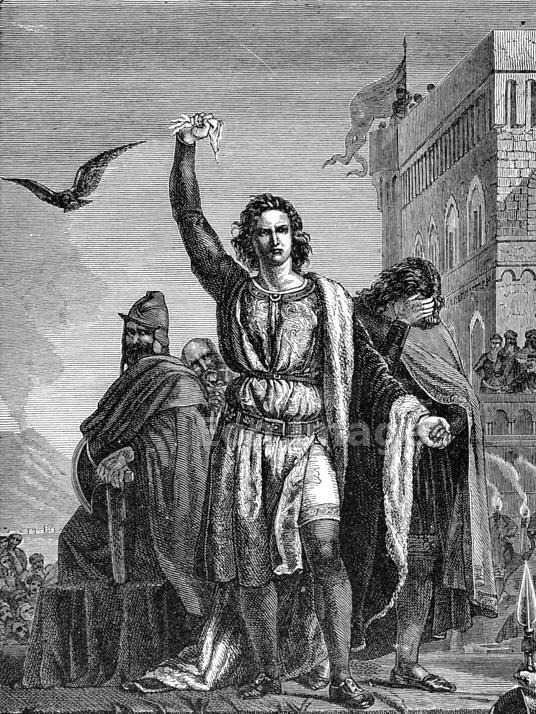
1252 – Conrad, Bavarian royalty, born (d.1268); called the Younger or the Boy, but usually known by the diminutive Conradin, was the Duke of Swabia (1254-1268, as Conrad IV), King of Jerusalem (1254-1268, as Conrad III), and King of Sicily (1254-1258 as Conrad II). He was born in Wolfstein, Bavaria, son of Conrand IV of Germany. He is sometimes known as Conrad V, though he never succeeded his father in Germany.
Conradin was the last legitimate Hohenstaufen, tafter the assassination of Conrad IV. We know little of his appearance and character except that he was "as beautiful as Absalom and spoke good Latin".
While he was still a child in Germany, his uncle Manfred made himself king of Sicily (1258), but when Manfred died eight years later, the kingdom was seized by Charles of Anjou. Conradin was persuaded to come to Italy to recover his kingdom, and, accompanied by his lover, Frederick of Baden, titular Duke of Austria, he gained the support of several Italian cities.
In the end, however, Conradin was captured by Charles, tried as a traitor and beheaded. His lover, Frederick, at his own request, was executed with him. Conradin was just 16; Frederick was 21. To this day Gay lovers make pilgrimages to the church of the monastery of Santa Maria del Carmine at Naples, where the two young men were laid to rest, together.


1479 – Grand Prince Vasily III of Moscow, (d.1533), Prince and military general. Vasily was homosexual throughout his life. He went to the extent of announcing this fact to other gay men of his time by shaving off his beard when his twenty-year marriage to his first wife was terminated - being beardless was a sort of gay password at the time.
During Vasily's second marriage, he was able to perform his conjugal duties only when an officer of his guard joined him and his wife in bed in the nude.

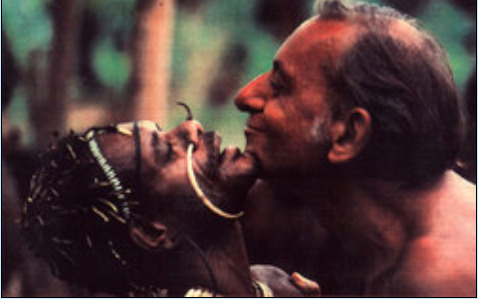
1922 – Tobias Schneebaum (d.2005) was an American artist, anthropologist, and AIDS activist. He is best known for his experiences living, and traveling among the Harakmbut people of Peru, and the Asmat people of Papua, Western New Guinea, Indonesia then known as Irian Jaya.
He was born on Manhattan's Lower East Side and grew up in Brooklyn. In 1939 he graduated from the Stuyvesant High School, moving on to the City College of New York, graduating in 1943 after having majored in mathematics and art. During World War II he served as a radar repairman in the U.S. Army.
In 1947, after briefly studying painting with Rufino Tamayo at the Brooklyn Museum of Art, Schneebaum went to live and paint in Mexico for three years, living among the Lacandon tribe. In 1955 he won a Fulbright fellowship to travel and paint in Peru. After hitch-hiking from New York to Peru, he lived with the Harakmbut people for seven months, where he slept with his male subjects and claimed to have joined the tribe in cannibalism on one occasion.
The Harakmbut treated him well. They taught him words from their language and otherwise communicated through gesture. They shared their food with him and decorated his body in red pigments. At night in their communal hut, the Arakmbut men welcomed him into a warm body pile. These entanglements often turned sexual, to Schneebaum's delight. As he would later write, he had at last found a place where people "would accept me, teach me how to live without a feeling of aloneness, teach me love and allow for my sexuality."
Until 1970 he was the designer at Tiber Press, then in 1973 he embarked on his third overseas trip, to Irian Jaya in South East Asia, living with the Asmat people on the south-western coast. He helped establish the Asmat Museum of Culture and Progress. Schneebaum would return there in 1995 to revisit a former lover, named Aipit. He recounted his journey into the jungles of Peru in the 1961 memoir Keep the River on Your Right. In 1999, he revisited both Irian Jaya and Peru for a documentary film, also titled Keep the River on Your Right.
Schneebaum spent the final years of his life in Westbeth Artists Community, an artists' commune in Greenwich Village, and died in 2005 in Great Neck, New York. He bequeathed his renowned Asmat shield collection to the Metropolitan Museum of Art in New York City and his personal papers are preserved within the Jean-Nickolaus Tretter Collection in Gay, Lesbian, Bisexual and Transgender Studies.


1942 – Richard O'Brien (born Richard Timothy Smith in Cheltenham, England) is a writer, actor, television presenter and theatre performer. He is perhaps best know known for writing the cult musical The Rocky Horror Show and for his role in presenting the popular TV show The Crystal Maze.
In addition to writing The Rocky Horror Show O'Brien also starred in its 1975 film adaptation The Rocky Horror Picture Show as the character Riff Raff. The stage show has been in almost continuous production since, and the cinematic version is one of the best known and most ardently followed cult films of all time.
In 1952, he emigrated with his family to Tauranga, New Zealand where his father had purchased a sheep farm. After learning how to ride horses, a skill which provided him with his break into the film industry as a stuntman in Carry On Cowboy, and developing a keen interest in comic books and horror films, he returned to England in 1964. Upon launching his acting career he changed his name to O'Brien — his mother's maiden name — as there was already an actor named Richard Smith.
He joined several stage productions as an actor without ever excelling or receiving critical acclaim, but that was not his primary objective. In 1972, he met director Jim Sharman who would help make his draft of a gothic-themed, schlock-horror comic-book fantasy romp into a reality. The script took O'Brien 6 months to write, Sharman suggested changing the working title They Came from Denton High to The Rocky Horror Show and the show opened in June 1973.
He became a serial bit-part actor in cult films and has appeared in notable movies such as Flash Gordon (1980), Dark City (1998) and Dungeons & Dragons (2000).
O'Brien has married twice and fathered three children. In a 2009 interview he spoke about an ongoing struggle to reconcile cultural gender roles and described himself as being transgender or possible third sex. O'Brien stated, 'There is a continuum between male and female. Some are hard-wired one way or another, I'm in between.' He expounded on this in a 2013 interview where he talked about using oestrogen for the previous decade, and that he views himself as 70% male and 30% female.


Elton John and David Furnish.
1947 – Elton John, English singer and songwriter, born; (born Reginald Kenneth Dwight) is an English pop/rock singer, composer, and pianist.
In his four decade career, John has been one of the dominant forces in rock and popular music, especially during the 1970s. He has sold more than 250 million albums, and over one hundred million singles, making him one of the most successful artists of all time. He has more than 50 Top 40 hits including seven consecutive #1 U.S. albums, 59 Top 40 singles, 16 Top 10, 4 #2 hits, and nine #1 hits. He has won five Grammy awards and one Academy Award. His success has had a profound impact on popular music and has contributed to the continued popularity of the piano in rock and roll. In 2004, Rolling Stone ranked him #49 on their list of the 100 Greatest Artists Of All Time.
In the late 1960s, John was engaged to be married to his first lover, secretary Linda Woodrow, who is mentioned in the song "Someone Saved My Life Tonight". He married German recording engineer Renate Blauel in 1984, in Darling Point, Sydney, with speculation that the marriage was a cover for his homosexuality. John had come out as bisexual in a 1976 interview with Rolling Stone, but after his divorce from Blauel in 1988 he told the magazine that he was "comfortable" being gay. Elton has a new look, and a sharp wit. "Ever since I had that interview in which I said I was bisexual," he grins, "it seems twice as many people wave at me on the streets."
In 1993, John began a relationship with Canadian David Furnish, a former advertising executive and now filmmaker. John and Furnish entered a civil partnership in 2005. They held a low-key ceremony at the Windsor Guildhall, followed by a lavish party at their Berkshire mansion, thought to have cost £1 million. Their son, Zachary Jackson Levon Furnish-John, was born to a surrogate mother in December 2010 in California. John and Furnish chose Lady Gaga, magazine editor Ingrid Sischy, and Sichy's partner Sandy Brant as Zachary's godmothers
John was inducted into the Rock and Roll Hall of Fame in 1994. He has been heavily involved in the fight against HIV-AIDS since the late 1980s and was knighted in 1998. He continues to be a champion for the LGBT social movements.


1958 – Today's the birthday of the award-winning British film and music-video director and screenwriter John Maybury. He directed the groundbreaking music video that made Sinead O'Connor a star: Nothing Compares 2U. In 2005 he was listed as one of the 100 most influential Gay and Lesbian people in Britain.
He studied at North East London Polytechnic and St Martins and designed sets for Derek Jarman's 'Jubilee', and worked with him on 'The Last of England', 'War Requiem' and 'The Tempest'.
In 1998 he produced his first full length feature Love Is the Devil: Study for a Portrait of Francis Bacon, a biopic starring Derek Jacobi and Daniel Craig (showing all in a lingering full-frontal). The film was screened in the Un Certain Regard section at the 1998 Cannes Film Festival. In 2005 he directed The Jacket with Adrien Brody and Keira Knightley. In 2008 his film The Edge of Love, a biopic on the life of Welsh poet Dylan Thomas starring Sienna Miller, Cillian Murphy, Matthew Rhys and Keira Knightley premiered. He also directed the final episode of the critically acclaimed HBO/BBC Rome series.


1962 – Thom Bierdz, openly gay American soap opera star and painter, born; Born in Kenosha, Wisconsin, this American actor is best known for his role as Phillip Chancellor III on The Young and The Restless, appearing from 1986 to 1989 and returning for one "dream sequence" in 2004.
Shortly after Thom left Y&R to pursue movie roles, his youngest brother Troy, a paranoid schizophrenic, beat their mother to death with a baseball bat. He is currently serving a life sentence in a Wisconsin prison. In May 2002, his other brother Craig committed suicide. Bierdz had devoted most of his time to painting in recent years, although he has also written a memoir entitled "Forgiving Troy."
On May 15, 2009, Bierdz re-appeared in The Young and The Restless as the mysterious character "Langley," who is eventually revealed to be Philip III, the heir to the Chancellor fortune. Phillip has been alive for the past 20 years and had faked his death after the drunk driving accident in 1989. In another revealing twist, Phillip returns to Genoa City and explains to Nina that the reason he left all those years ago is because he was gay and felt back then he would not have been accepted.
Thom has also written a memoir entitled "Forgiving Troy". In September 2009, The Human Rights Campaign at a Black Tie Gala themed "Speak Your Truth" presented Thom with their Visibility Award for his continued contributions to charity work for human rights, through his art, his acting, his writing, and his painting in the nude.
*(Hope you like my little joke!)


1979 – Lee Pace is an American actor. He is known for starring as Thranduil the Elvenking in The Hobbit trilogy and as Joe MacMillan in the AMC period drama television series Halt and Catch Fire. He has also appeared in the Marvel Cinematic Universe as Ronan the Accuser, a role he first played in Guardians of the Galaxy and reprised in Captain Marvel. He received an Emmy Award nomination for his portrayal of Ned in the ABC comedy-drama Pushing Daisies. From 2021, he stars as the galactic emperor Brother Day in the TV series adaptation of Isaac Asimov's science fiction stories Foundation.
Pace was born in Chickasha, Oklahoma. As a child, Pace spent several years in Saudi Arabia, where his father worked in the oil business; the family later moved to Houston, Texas. Pace attended Klein High School in Spring, Texas, a suburb of Houston, with actor Matt Bomer.
Pace briefly stopped attending high school to act at Houston's Alley Theatre before returning to graduate. At the Alley, he appeared in productions of The Spider's Web and The Greeks.
In 1997, he was accepted by the Juilliard School's Drama Division. While there, he was in several plays, including Romeo and Juliet as Romeo, Richard II in the title role, and Julius Caesar as Cassius. He graduated from Juilliard with a Bachelor of Fine Arts degree.
Pace first gained recognition for his role in the 2003 film Soldier’s Girl, based on real events, in which he played the central role of Calpernia Addams.
Of the role, Pace has said:
Not even my excellent training at Juilliard prepared me for my first movie role, where I played a transsexual who falls in love with a military guy in Soldier’s Girl. Here I was, this 6 feet 3 inches (1.91 m), 190 pounds (86 kg), lanky kid from Chickasha, Oklahoma, not knowing how to begin being a woman. So I saw documentaries about transsexuals, I lost twenty-five pounds, and I put on prosthetic boobs and hips to become that character. There were times I’d look in the mirror and wonder, ‘What am I doing to my life here? My dad is going to kill me!’ But the reason I went into acting was to be able to play parts as complicated and important as this one. In playing a transsexual, I got the chance to help change people’s perspective about other people, and that is a powerful thing. I’m playing a swashbuckling bandit in my next film, but I’ll always be proud of Soldier’s Girl ”.Pace's sexual orientation became a topic of public discussion after he was accidentally outed as gay by Ian McKellen, who worked with him in The Hobbit films, in 2012. McKellen's "outing" was described in the press as a blunder and an accident on his part, as Pace had never addressed the subject. In June 2018, he spoke about being a queer actor in an interview with The New York Times

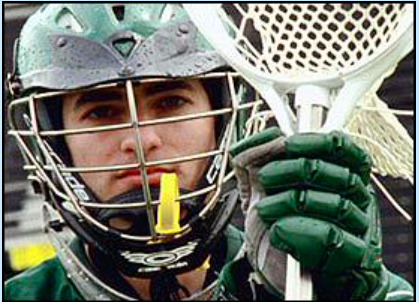
1983 – Andrew Goldstein (born in Milton, Massachusetts) is the first American male team-sport professional athlete to be openly gay during his playing career. He had been a professional lacrosse goaltender for the Long Island Lizards of Major League Lacrosse. He was originally drafted by his hometown team, the Boston Cannons.
The two-time All-American at Dartmouth College in Hanover, New Hampshire, Goldstein made headlines off the field in 2005 when he was dubbed by ESPN to be "the most accomplished male, team-sport athlete in North America to be openly gay during his playing career."
Yet as Goldstein points out, "gay All-American" is a phrase that is still contradictory for some:
"'All-American' is what you think of, you know, the three kids, the white picket fence, 'All-American'. And gay does not fit into that. So it's nice for me to hear 'gay All-American,' and to think it's just the same as 'All-American.' "
He revealed his sexuality to his team after the 2003 season, and an online essay that appeared on Outsport.com elevated his story to national prominence.
It was the first session of weight lifting during the summer term of Goldstein's sophomore year when he officially came out to his team. He pulled aside senior defender Matt Nicholson and told him he had a boyfriend, Ethan.
Nicholson, who had known Ethan previously, admittedly was surprised by the revelation, but he still managed a pretty decent comeback.
"Wow, man," he said, "he's hot."
Later, in an emotional e-mail, Nicholson told Goldstein it didn't change anything.
"I'm here for you," he wrote. "I'm your teammate. I'm your defenseman, and you're my goalie."
Goldstein was touched.
Goldstein asked Nicholson to pass the word to the rest of the team. If anybody had any questions or concerns, Goldstein said, have the player come talk to him. During the first few weeks, there were some uncomfortable moments.
When the news had settled on the team, a number of Goldstein's teammates apologized. It occurred to them that, in the macho, testosterone-charged atmosphere of the lacrosse locker room, they had probably offended their teammate countless times over the seasons.
youtube
SportsCenter: "Andrew Goldstein" (8 minutes)
In 2006, Goldstein was honored by being named to the OUT 100. He also received a prestigious 2006 GLAAD Media Award for the feature entitled "Andrew Goldstein" which aired on ESPN's Sportscenter.
A biochemistry and molecular biology major at Dartmouth, Goldstein has earned his Ph.D. in biology at UCLA with a specific focus on cancer. He is now a post-doctoral researcher at UCLA. On August 2, 2013, Goldstein was inducted into the National Gay and Lesbian Sports Hall of Fame.

1993 – Idaho enacts a sex offender registration law that includes consensual sodomy.


24 notes
·
View notes
Text

Drawing of Henry VI of England by Jörg von Ehingen.
From 1457-1459, Swabian knight Jörg von Ehingen traveled Europe participating in various campaigns; throughout, he kept a journal and sketchbook of his impressions of the many royal courts he passed through. His compilation includes portraits, in the order of his visits, of Duke Ladislaus V of Austria, Charles VII of France, Henry IV of Castile, Henry VI of England, Alfonso V of Portugal, Janus III of Cyprus, Duke René of Anjou, John II of Aragon, and James II of Scotland.
#we love a contemporaneous portrait from an eyewitness#absolutely dapper hat#you may be familiar with Alfonso V's incredible poulaine shoes and/or his terrible heraldic lion#Henry's got pretty swell poulaines himself#altho I have just noticed his lil skelly hands#plantagenets#manuscript
61 notes
·
View notes
Text
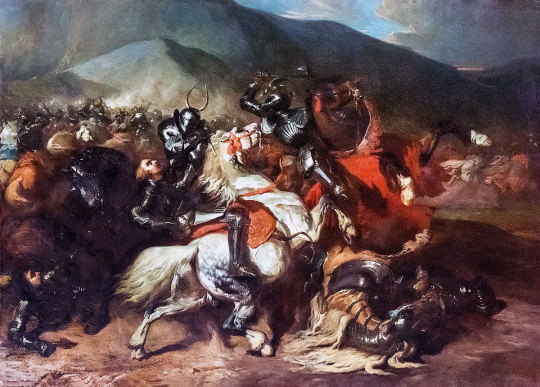

On 22nd March 1421, Scottish army. under the Earl of Buchan defeated English forces at Bauge in Anjou, France.
Not heard of it? That’s because the history we were taught in school was all anglicized, oh we did get a wee bit about the 100 year war, mainly Agincourt, because the English won that day, or possibly Crecy, another victory for them, Bauge and many other times the English were gubbed are ignored.
Ok you might be wondering why I say a Scottish army, historians all say that the majority of the troops were Scottish soldiers, aye there was a few Frenchmen fighting on “our” side, but this was very much a Scottish victory over an English army.
This all goes down as part of the Auld Alliance, which was signed in 1295 by King John Balliol and Philip IV of France. The Alliance was renewed periodically after that date and by the 1410s it was very much “in play” as Henry V of England initiated the third phase of the Hundred Years War, often known to historians as the Lancastrian War.
In 1418, it was the French Dauphin who called on his Scottish allies for assistance in his efforts to curtail Henry’s depredations after the great battle of Agincourt in 1415. It had to be the Dauphin, or Crown Prince, who sought help from Scotland because the French king, Charles VI, was already showing signs of the mental illness that would eventually see him nicknamed Charles the Mad.
The French aristocracy had split into two factions with many supporting the Duke of Burgundy in his aspirations to take the throne, while many others stayed loyal to the King and the House of Valois, known as the Armagnacs. Increasingly it was the teenaged Dauphin, the future Charles VII, who made all the major decisions for the Valois regime and, faced with the Burgundy alliance with Henry V and the surrender of many of his own forces, he sent for help from Scotland.
The complicating factor at the time was that King James I of Scotland was still a prisoner of the English, albeit that he was part of the royal household of Henry, whom he greatly admired, and he would actually fight with the English army against the French in France in 1420. In charge of Scotland was the Duke of Albany, Robert Stewart, who had become regent when James was first captured by the English in 1406 while en route to France.
There had been no large battles between the Scots and the English since the Battle of Homildon Hill, or Humbleton Hill, in 1402 won by the English, but with England preoccupied with France, Albany no doubt felt it safe to respond positively to Scotland’s oldest ally. By 1419, there was also peace of a sort along the border with England so the Scots could afford to send an army of around 6000 men including men at arms, spearman and archers to serve alongside the remaining French royal army.
Henry V’s of England’s brother, Thomas the Duke of Clarence led 10,000 men south towards the Loire. They set about besieging the castle at Bauge when the Scots were garrisoned, they made contact with them the day before Good Friday. A truce was reached, lasting until Monday, so that the combatants could properly observe the religious occasion of Easter.
The English lifted their siege and withdrew to nearby Beaufort, while the Scots camped at La Lude. However, early in the afternoon of Saturday Scottish scouts reported that the English had broken the truce and were advancing upon them hoping to take them by surprise. The Scots rallied hastily and battle was joined at a bridge which the Duke of Clarence, with banner unfurled for battle, sought to cross. A detachment of a few hundred men under Sir Robert Stewart of Ralston, reinforced by the retinue of Hugh Kennedy, held the bridge and prevented passage long enough for the Earl of Buchan to rally the rest of his army, whereupon they made a fighting retreat to the town where the English archers would be ineffective.
Both armies now joined in a bitter melee that lasted until nightfall. During this time Sir John Carmichael of Douglasdale broke his lance unhorsing the Duke of Clarence; since that day the Carmichael coat of arms displays an armoured hand holding aloft a broken lance in commemoration of the victory. Once on the ground, the Duke was killed by Sir Alexander Buchanan. The English dead included the Lord Roos, Sir John Grey and Gilbert de Umfraville, whose death directly led to the extinction of the male line of that illustrious family, well known to the Scots since the Wars of Independence. The Earl of Somerset and his brother were captured by Laurence Vernon (later elevated to the rank of knight for his conduct), the Earl of Huntingdon was captured by Sir John Sibbald, and Lord Fitz Walter was taken by Henry Cunningham.
On hearing of the Scottish victory, Pope Martin V passed comment by reiterating a common mediaeval saying, that the Scots are well-known as an antidote to the English.
20 notes
·
View notes
Text

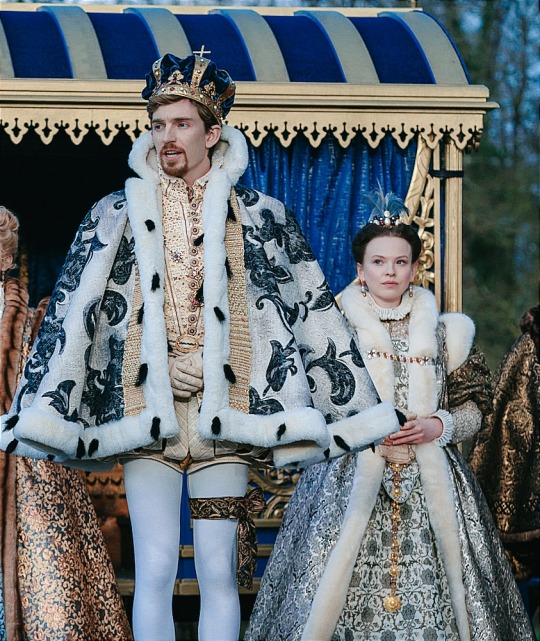

The Serpent Queen
Scott Folan as Hercules
Philippine Velge as Margot
Bill Milner as King Charles IX
Laura Marcus as Elizabeth
Stanley Morgan as Anjou
10 notes
·
View notes
Text
Margaret of Anjou had the most intimate interest in the wedding in 1456 of her kinswoman, Marie, daughter of Charles, count of Maine, to Thomas Courtenay, the son and heir of the earl of Devon. That this was a court-contracted marriage is suggested by the fact that Marie's wedding gown was supplied by the king's Great Wardrobe [...] The second notable marriage of 1457 to be arranged at court was that between the king's cousin, Margaret Beaufort, countess of Richmond, and her third husband, Henry Stafford, second son of the duke of Buckingham. This additional bond among the king's blood relatives buttressed the Lancastrian regime and the royal family at a time when the survival of the dynasty rested on the young shoulders of Prince Edward, the only son and heir of King Henry VI and Queen Margaret.
— Ralph A. Griffiths, "The King's Court during the Wars of the Roses" | King and Country: England and Wales in the Fifteenth Century
It is, indeed, a striking fact that no aristocratic marriages of comparable significance took place outside the court circle in these crucial years before the onset of civil war. Most — if not all — of those that did take place were probably discussed at court among magnates — Staffords, Courtenays, Beauforts, Talbots, Berkeleys, Butlers, Greys and Percies — who were loyal to the house of Lancaster and prominent at King Henry's court.
#crazy how henry vii might've had stafford siblings#this is why the duke of buckingham was#margaret beaufort's nephew by marriage#also thomas courtenay was beaufort by blood#historicwomendaily#margaret beaufort#henry vi#margaret of anjou#thomas courtenay 14th earl of devon#marie of anjou countess of devon#historian: ralph a. griffiths
21 notes
·
View notes
Text
inspired by @mihrsuri‘s awesome posts:
“While Charles regarded the Prince of Orange and Prince George of Denmark as suitable matches for his nieces, for his daughter and heir a mate was required who would willingly play second fiddle...”
“Princess Elizabeth was given a choice among the younger sons of Ernest Augustus, Elector of Brunswick-Lüneburg and his wife, Sophia of the Palatinate, a granddaughter of James IV and I. Elizabeth chose for her prince the handsomest of the brothers, Maximilian William, a third son three years her elder...” (Charles II and His Daughter Elizabeth II)
“The birth of Princess Elizabeth went a long way towards soothing anti-Catholic fears among the English population, with a Protestant heir standing between the Catholic Duke of York and the throne. The Queen’s position improved immensely..”
“Although her fondness did not extend to her father’s mistresses, the new Queen was inordinately fond of her half-sisters and brothers. Don Carlos accompanied his niece the Princess Royal on the occasion of her marriage to Philippe, Duc de Anjou, later King of Spain...”
“Elizabeth’s closest inner circle included her mother the Queen Mother, uncle the Duke of York, the younger of her surviving cousins the Lady Anne, and her half-sister Charlotte Lee, Countess of Lichfield...” (The Protestant Princess Who Saved England: Elizabeth Stuart and the Protestant Succession)
“Although the match had been set for years, as the time drew near for Max to leave for England, Sophia began to harbor misgivings. Her son was not content as a third son; he had been very pleased to have been chosen over his brothers but how long he would be contented to leave the reins of power in the hands of his wife?” "Max proclaimed himself very happy with his new bride. Elizabeth was not classically beautiful (she had too much of her father in her for that) but she was considered handsome. Max described her in letters to his mother and sister as 'tall and well-formed with dark curly hair and sensual lips'..." "The first clash came when Max, slighted over the Queen's choice of her brother for a honor he believed should have been his, lashed out by showing deliberate and obvious attention to one of his wife's ladies..." "Theirs was a tumultuous marriage but when the couple worked in concert, they could accomplish great things indeed... " "Did Max and Elizabeth feel love for one another? We'll never know for certain but what we do know is that whatever their arguments, they remained physically affectionate throughout their marriage..." (Jolly Prince Max: He Who Would Be King)
“Unlike her father and uncle, Elizabeth, who lacked close family ties to France, pursued a much less conciliatory policy towards France and one that aligned more closely with Parliament’s ...”
“Though the pair later married their eldest surviving daughter to a grandson of Louis XIV, they also married the rest of their offspring with the exception of Princess Charlotte into the other royal families of Europe...” (Politics in the Court of Queen Elizabeth and Prince Max)
8 notes
·
View notes